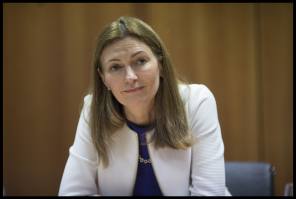

Investment bosses have warned the Fed’s slow approach to rate rises could force the central bank to play catch-up later on, particularly if President Trump succeeds in his radical plans to boost growth.
The Federal Reserve has hiked the US interest rate by 25 basis points, meaning it now stands in a range of 0.75 to 1 per cent.
This is the third rate rise in a decade.
The increase comes during a time when the Fed is no longer plagued by weak economic data in the US which caused it to stay its hand for much of last year.
Long treasuries rallied as some had feared a more hawkish Fed, Bryn Jones, head of fixed income at Rathbones, said.
Despite the Fed continuing to reiterate a gradual approach, Mr Jones pointed out that this hike comes hot on the heels of one three months ago, adding: “Gradual is becoming a lot less gradual.”
Adrian Lowcock, investment director at Architas, pointed to the equity markets which have reacted positively to comments from the US central bank.
This, he said, serves as an indication that the US economy continues to strengthen.
The Fed has suggested it will take a cautious and slow approach to raising rates, with two further rate rises expected in 2017.
Mr Lowcock said this slower approach wrong-footed some investors who were expecting a faster path of interest rates rises.
While this strategy caught some bond investors out, the Architas investment boss said this steady approach could prove supportive to the US and global stock markets.
“However, in taking a more cautious approach there is a risk that the Fed will fail to get ahead of the curve and will be forced to raise rates more quickly in the future, particularly if President Trump is successful in achieving his tax cuts and spending plans.”
Luke Bartholomew, investment manager at Aberdeen Asset Management, said the rate announcement was roughly what investors were expecting, meaning financial markets should take the hike in their stride.
He said the question now is how quickly the next few hikes come, adding the Fed faces a “tricky path” from here.
“Over the last few years they’ve consistently overestimated how many hikes they will deliver because the economy has turned out weaker than they expected.
“But now the risk is that the Fed will need to catch up with easier fiscal policy and stronger growth outlook.”
Meanwhile, Mr Bartholomew pointed to the increasingly “shrill calls” for the Fed to have its independence curtailed, adding: “It’s hard to imagine that the rest of this hiking cycle will go off without a hitch.”
Rich Clarida, global strategic adviser at PIMCO, said: “Of course, little is known about the ultimate shift in US fiscal policy that is likely to take place under the Trump administration.
“But the Fed is saying today that even before the potential fiscal boost is factored in, the US economy no longer requires emergency policy rates.”
Andrea Iannelli, investment director at Fidelity International, said the short term outlook remains bullish for risky assets, including credit and US Treasuries.
Yet he said the US dollar is likely to lose some steam as the focus shifts to the fiscal side and to other central banks.
The US dollar weakened following the announcement, with the dollar index down 0.9 per cent on the day.
katherine.denham@ft.com



